
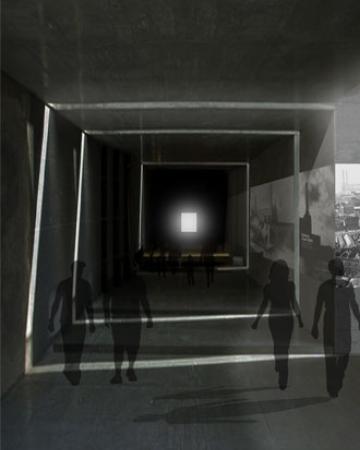
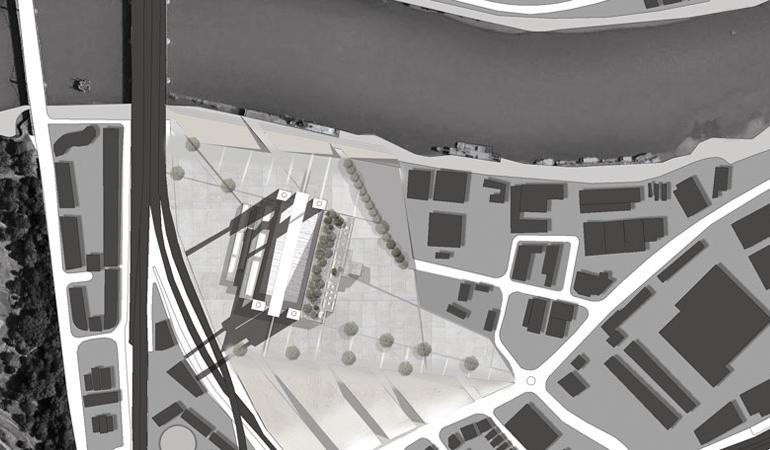
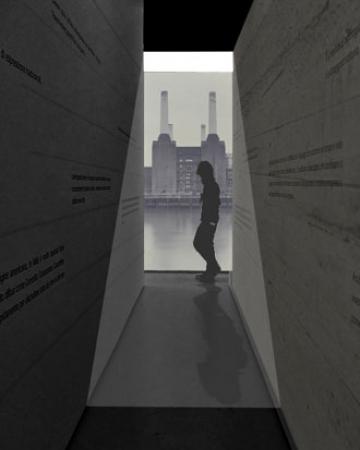

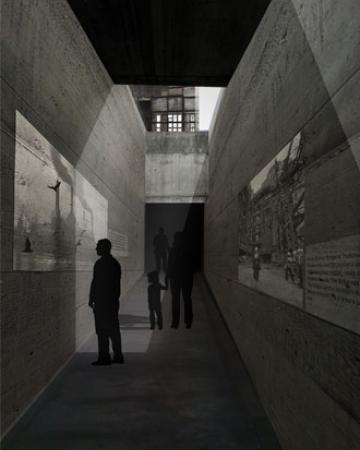
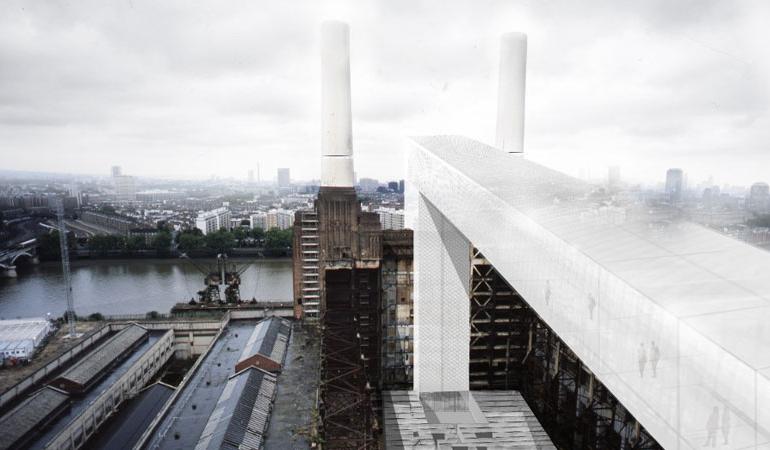
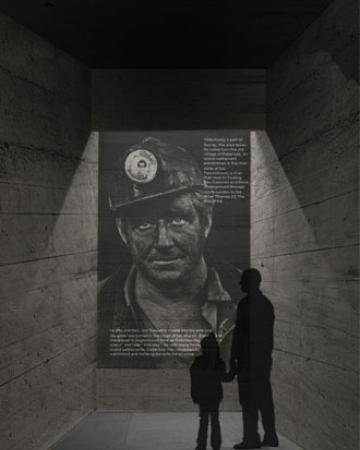
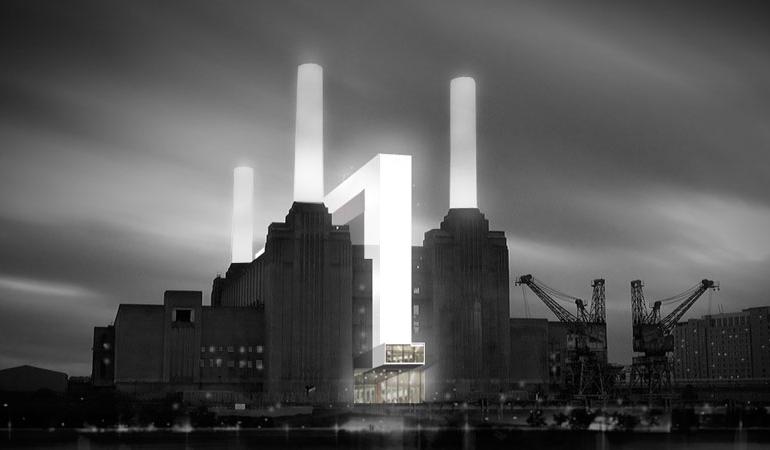
Shortlisted in the Winner of Winner stage of ArchTriumph Competition, London 2013, The Museum of Architecture in London is a proposed project to rejuvenate the historical site of the Battersea Power Station. For the UK, and for London specifically, Battersea Building is of much value given it is a dominant feature of London's skyline. This very building, being an exhibit in itself, has contributed by function to the growth of London. It has provided the power (life blood) to London and its residents; it enabled the modernization of London by supplying power to the subways, homes, industries and businesses of the city. Today, as a controversial landmark in London, the Battersea building is proposed to house the Museum of Architecture.
Architecture’s ability to transcend the tangible world into the metaphysical highlights its importance that stretches beyond the form and materiality of its fabric. Architecture provides a sense of space that helps us harmonize with the environment, enriching our lives aesthetically and spiritually, creating a legacy that reflects and symbolizes culture, heritage, traditions and identity; much like religion does.
The architectural direction here is to create a place for the people and for architects, by working with the physical and adding to it the metaphysical. Architecture becomes ‘an envelope’ and lets all the other components of human existence become more important, where architecture is no longer a building, but a container of poetry, thoughts and dreams. Monolithically Standing like a temple on a mountain, with its cathedral like bays and its minarets like chimneys, the Battersea being a sanctified place architecturally, is recognized as a 'cathedral to architecture’ and as a 'temple of power’.
A transparent well-lit structure floats superciliously above the building, and connects visually with the four-lit chimneys as a halo: being the aura of majesty and glory that surrounds the building, regarding it with admiration and sentiment. The concept grounds its roots in marrying the physical work with the metaphysical, reflecting a spiritual place for architectural worship. The start of the journey enhances the curiosity and anticipation that gravitates towards a light source.
This volume that is defined by four dots (the chimneys) and a dash (the new structure) become the aura of the building that embraces the sky above. The chimneys are also illuminated to become an integral part of the design and define the boundaries of the envelope. Furthermore, the halo-structure elevates above the existing brick building to become one with the chimneys and with the London skyline. It both incubates the people in their celebration of the city's architecture while also giving Battersea its rightful recognition for the whole world to appreciate.
"Silence is the language of god, all else is poor translation." - Jalal edin rumi.
On entering the building, the visitor first moves under a plaza through a mysterious and dramatic space leading to a choreography of fluid cinematic visuals that narrate architectural and historical events poetically, in a dim environment highlighted by rays of light. The path widens gradually to unfold a framed view of the Thames River, giving the visitor a glimpse of the surrounding environment. Exhibition spaces and galleries are contained by a vertical mass within a ramp that slowly ascends from below, taking one on a mysterious journey to the bridge of light; a spacious large platform which houses the permanent exhibition with panoramic views onto the city.
From the plaza on the other hand, the visitor can enjoy the quiet, open yet vibrant space contained within the internal envelope of the Battersea building. The plaza is flanked by the library/ educational facilities and the temporary galleries in the two main halls at either ends. The hall that contains the temporary galleries, leads to an Ariel garden on its roof. A spacious theatre is tucked below the sloped plaza, dedicated for architectural lectures, events, and ceremonies to interact with the architects and the people, and its glazed façade unveils the river to blur the line between what is outdoor and what is indoor.
The building sits peacefully, in its own garden like secluded setting, away from the hustle and bustle of the city. The new building developments are pushed towards the edges of the plot leaving a considerable space between the old and the new to respect the sanctity of the MOA at Battersea power station. The commercial and residential elevate gradually from the landscape, and ascend in height in response to the urban fabric at south while the retail, and restaurants sink into the landscape at north honoring the river and enhancing the views out to the city of London.
The Battersea will be valued aesthetically and functionally by providing a space for people to not only gather and interact but to experience the works of architects, to build a relationship with architecture and to contemplate within the existing building envelope. Moving between history and today, the design becomes a story that brings together the people of London, to memorize the heritage, the architecture and the history, in narrated scenes through accentuating the feelings of passion, anticipation, and hope. It will forever act as a pulsating energy source and hub, both incubating the people in their celebration of the city’s architecture, and also giving Battersea its rightful recognition for the whole world to appreciate.



